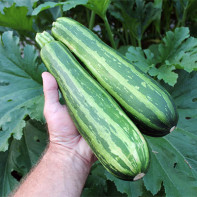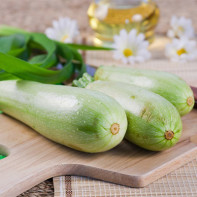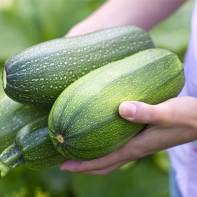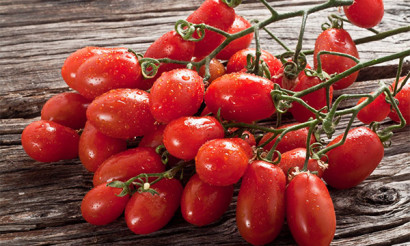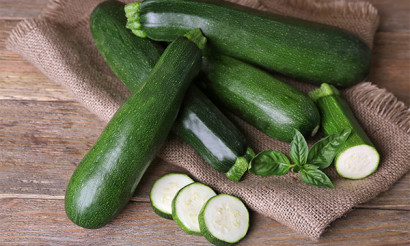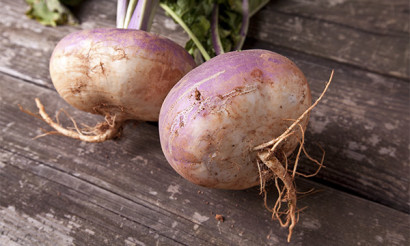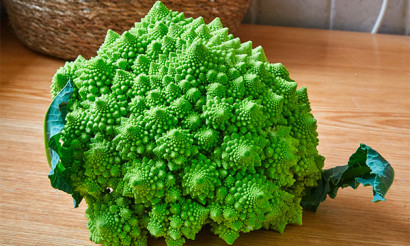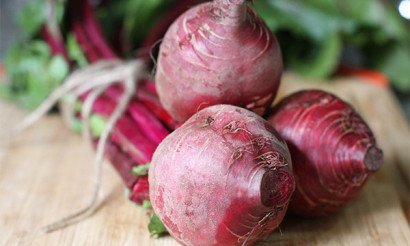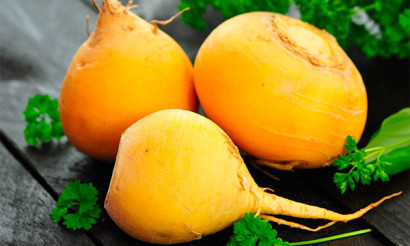Zucchini: species, composition, useful properties and contraindications
Green zucchini with tender flesh - this is the safest and at the same time useful variety of summer vegetables. They very rarely cause an allergic reaction. Their flesh does not have a pronounced taste, so it can perfectly combine with any vegetables, legumes, cereal crops, with meat and other protein foods. No wonder so many dishes are made from zucchini, from the now familiar zucchini caviar to exquisite salads. They are stewed, fried, pickled and even made into jam.
- Types of zucchini
- What's the difference between zucchinis and zucchini?
- What's the difference between eggplant and zucchini?
- Composition and Calories
- How zucchinis are useful
- For Women
- For Men
- Pregnancy
- Breastfeeding
- For children
- Slimming
- Are fried zucchinis useful?
- Zucchini juice: benefits and harms
- The benefits of zucchini seeds for the body
- The benefits and harms of zucchini caviar
- Zucchini in Medicine
- Diabetes
- For pancreatitis
- For Gastritis
- For Intestines
- For constipation
- For gout
- For colitis
- For hemorrhoids
- Pri cholecystitis
- Zucchini-based folk medicine recipes
- Zucchinis in Cosmetology
- Harm and Contraindications
- How to choose and keep zucchinis
- You can freeze them.
- How to Eat Zucchini Properly
- How much you can eat per day.
- Can I Eat at Night?
- Can I Eat Raw?
- What can be made of zucchini: Recipes
- Fritters
- Casserole
- Stew
- Salad
- Draniki
- Soup
- Cutlets
- Pancakes
- Sauce
- Chebureks
- Zucchinis on Korean style
- Zucchini caviar
- Marinated Courgettes
- Zucchinis on the grill
- How to Stew
- How to Roast
- Zucchinis must be peeled before grilling
- How to remove bitterness from zucchinis
- Zucchinis can be given to animals
- Interesting facts about Courgettes
Zucchini Types
There are different types of zucchini - for example, zucchini, patissoni, krukneki.
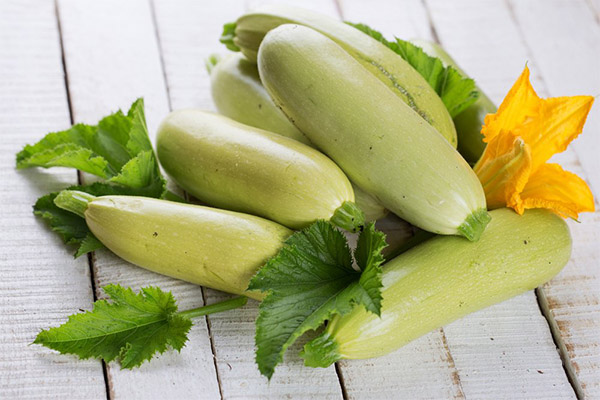
- Patissons are distinguished by their unusual shape, resembling flying saucers from comic books. But they can be any color you like, be it green or yellow. Patissons have a harder and denser softness than the usual zucchini. This allows them to use different types of heat treatment - some cooks assure that the meat stewed with passionfruit and chili peppers is especially tasty.
- Another variety is crookneck, popularly called pumpkin or zucchini. The top is indeed curved. These pumpkins are most often bright yellow in color, and their rinds can be smooth or embossed. The density of the flesh can vary greatly depending on the variety.
- In the Middle East and Mexico, cous cous zucchini are grown. They have a sweeter flesh compared to most domestic varieties.
How zucchinis differ from zucchini
In fact, zucchini is not a separate vegetable, it is simply a less familiar variety of zucchini to the Russian consumer. And they both belong to the same family, headed by the pumpkin. "Zucchini" is a diminutive word for Italian "zucca," meaning "pumpkin." But they differ in appearance. Zucchini is most often dark green in color (with lighter stripes visible against this background). Less common are yellow fruits. They are also more elongated and flattened on the sides.
Zucchini peels are denser than other varieties of zucchini. The flesh is quite hard and juicy, in addition, it has a more pronounced taste, but there is no sweetness in it.
What is the difference between eggplant and zucchini
To begin with, it is worth noting that from a biological point of view, both vegetables belong to different families. So, eggplant is the Solanaceae, which include tomatoes, potatoes and bell peppers. But zucchini is in the Pumpkin family. Hence the different chemical composition, color of the flesh and skin (by the way, eggplant has it due to the presence of powerful antioxidants-anthocyanins, but zucchini does not). Thus, in common between them, perhaps, only the shape of the fruit and a high content of useful substances.
Composition and calories
The caloric value of zucchini is not very high - only 20-30 kcal per 100 grams. Because of this, zucchini is included in any dietary diet, because for such a caloric content, they provide the body with everything it needs and at the same time help to lose weight.
Zucchini contains a large number of vitamins and minerals, such as:
- Tocopherol - vitamin E, one of the strongest natural antioxidants, it slows down the aging process in the body. And it is contained not only in the pulp, but also in the seeds of zucchini.
- Ascorbic acid and beta-carotene are also strong antioxidants. Moreover, vitamin C is useful for blood vessels and strengthening the body's immune system, and vitamin A (beta-carotene) - for vision.
- B and PP vitamins help maintain normal metabolism and the central nervous system.
- Minerals - sodium, potassium, iron, phosphorus, magnesium, each of which plays a crucial role in the synthesis of hormones and the process of hematopoiesis.
- Pectins are a whole group of substances that help to eliminate toxins from the body. In addition, it is thanks to it that any food is easily digested.
Interestingly, the ratio of potassium to sodium in zucchini is such that they have a mild diuretic effect associated with the ability to remove excess sodium salts. That is why zucchini are advised to eat people who suffer from hypertension and pathologies of the cardiovascular system. And the combination of ascorbic acid and iron prevents the development of anemia.
What are zucchinis good for?
Zucchini is, if not a panacea, then close to it. In fact, it is most often used to normalize digestion, although its possibilities are much broader.
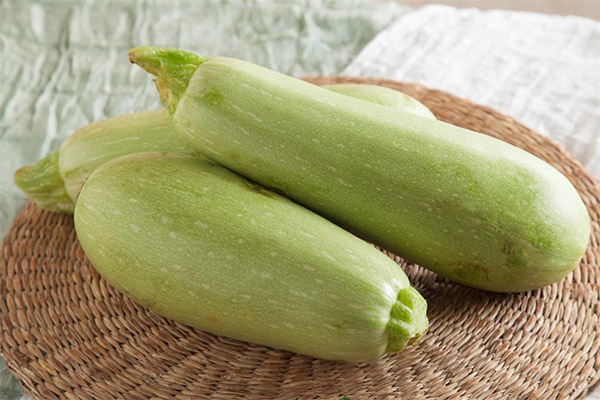
For women
Like many other plants, zucchini contains compounds that are beneficial in general to the hormonal background. This is especially important for women during menopause. In this case she practically does not feel hot flashes and other troubles typical for that period (psycho-emotional tension, etc.).
In addition, zucchini allow you to remove excess fluid and thus prevent venous stasis and varicose veins. Finally, zucchini contain substances that help improve the condition of hair and nails.
For men
For the stronger sex, zucchini is good for its ability to regulate "bad" cholesterol levels - a problem faced by the vast majority of men. But in addition, zucchini contains a lot of iron, and it is involved not only in blood formation, but also in the production of the male sex hormone testosterone. So, eating zucchini will help to avoid problems in the reproductive system.
Starting at a certain age, all men are advised to include zucchini in their diet as often as possible, because it is a great way to prevent stroke and other such diseases. Also these vegetables are useful for liver problems.
When pregnant
Most nutritionists and obstetricians and gynecologists believe that zucchini is very useful for future mothers - of course, in small quantities, so as not to provoke diarrhea. Vitamin A contained in the pulp is beneficial for the growth and development of the baby, B vitamins are needed to normalize metabolism and are useful for the CNS, and vitamin C is necessary to strengthen the vascular walls. Calcium contained in zucchini will prevent the appearance of cramps, which in future mothers can be particularly distressing. Potassium and sodium are good for the cardiovascular system of mom and baby.
But at any stage of pregnancy zucchini is best eaten boiled or baked, but not pickled and not fried. Even fritters are best baked in the oven with little or no oil.
When Breastfeeding
Zucchini are considered quite safe and even contribute to lactation vegetables. By the way, it is customary to introduce them first in baby food, because they are the most neutral - both in taste and in their qualities. In addition, they normalize metabolism and help the young mother to get into shape faster. Therefore, a nursing mother can safely include them in her menu. But it is still better to use them in boiled and baked form, without garlic.
For babies
For babies, as already mentioned, zucchini should be the first complementary food. It is soaked in cold water for 15-20 minutes to at least partially get rid of chemicals, then remove the skin and wash thoroughly again. To make mashed potatoes for children, take a piece of the middle part of the zucchini, remove the seeds from it, cut into cubes and cook over low heat for 7-10 minutes. To preserve more vitamins in the vegetable, it is recommended to put it in boiling water. Salt is not added there. The finished zucchini is rubbed through a plastic sieve. Mashed potatoes should turn out a little fluid. Before giving it to the baby, the vegetable mass is beaten with a fork.
For weight loss
Zucchini helps to lose weight because it is a low-calorie product with an average energy value of 24 kcal per 100 grams. But it is not the only thing that is useful for weight loss. Zucchini plays the role of a kind of sponge, which absorbs all kinds of unpleasant things and fights premature aging, because it contains even more antioxidants than grapes.
Nutritionists advise replacing at least one meal a day with zucchini, and this will help to lose up to 1 kg in a day. At the same time for three days you can achieve very impressive results, if you also give up sweets.
A variant of the dietary menu may look like this:
- First day. Zucchini casserole for breakfast, vegetable soup made of celery, peppers, zucchini and tomatoes for lunch and boiled chicken filet for the second day. You can drink a glass of tomato juice. For dinner, there are zucchini stuffed with rice and mushrooms.
- The second day. For breakfast - 100g of unsweetened fatless cheese, the same amount of zucchini caviar and maximum one piece of rye bread toast. For lunch - boiled chicken fillet and zucchini caviar as a side dish, for the afternoon - fruit salad, but without whipped cream. For dinner, rice with zucchini caviar.
- Day 3. For breakfast - zucchini pancakes made of wholemeal flour. For lunch - zucchini salad with celery stalks and various greens. For dinner - vegetable stew.
In three days you can get rid of 3-5 kilograms of extra weight without much effort. Of course, it is necessary to consult a doctor beforehand.
Are fried zucchinis useful?
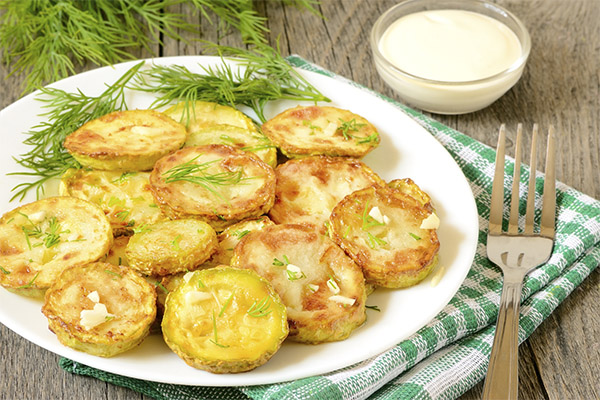
On the one hand, roasted zucchini contain some of the vitamins that are in fresh vegetables. On the other hand, a lot depends on how you cook them. Zucchini absorb quite a bit of oil when fried, so the body gets more fat than it needs. Calories are added, and this definitely does not contribute to weight loss. If the zucchini is fried with garlic, then this is definitely harmful for the gastrointestinal organs. Thus, the negative sides of this dish are much more than positive.
Zucchini juice: benefits and harms
Zucchini juice partially contains the same vitamins and trace elements as fresh fruit. These are magnesium, potassium, iron, phosphorus and others, as well as compounds involved in the most important biochemical processes (B vitamins and ascorbic acid, which has strong antioxidant properties). Like the fruit itself, the glycemic index of this juice does not exceed 15 units, so it can be consumed even when diagnosed with type 2 diabetes and obesity. This is done in order to:
- Provide the body with vitamins;
- control appetite;
- eliminate edema;
- Improve intestinal peristalsis;
- Reduce the level of "bad" cholesterol;
- to get rid of excess weight;
- To achieve a beautiful complexion;
- to organize the work of the kidneys.
In addition, this juice helps to eliminate toxins from the body faster. It has enveloping properties and can strengthen the central nervous system. This juice is also recommended for hypertension, inflammatory diseases of the gastrointestinal tract and kidneys, cholecystitis and cholelithiasis.
But, as doctors used to say in the old days, any product is a poison and a cure at the same time, it's all about the dosage. This is also true for zucchini juice. You can drink no more than 1 liter of this drink a day, otherwise diarrhea and dyspepsia (unpleasant feelings in the stomach) will be guaranteed. In addition, you should not drink zucchini juice during exacerbation of inflammatory kidney diseases. It increases the load on this organ, which already suffers in this stage of the disease. Finally, if there is an individual intolerance to the zucchini themselves, then it is also better not to drink the juice.
The benefits of zucchini seeds for the body
When cooking zucchini, most often the seeds are disposed of. And completely in vain, because they have diuretic properties, which allows with their help to eliminate edema. For this purpose, the seeds are not fried like pumpkin seeds, but simply dried in the oven. The optimal variant - 15-25 pieces per day, this will relieve even severe edema.
The benefits and harms of zucchini caviar
Theoretically cooked at home zucchini caviar contains only useful substances. However, in fact, this is not entirely true. After heat treatment, which zucchini undergoes during the preparation of caviar, most of the ascorbic acid is destroyed.
But in zucchini caviar still contains a lot of potassium, so this product is useful if you are prone to edema or intestinal and gallbladder disorders. In addition, it contains folate. They prevent the accumulation of homocysteine in the body, which negatively affects not only health in general, but also cognitive functions. Also, zucchini caviar contains pectin, which means it protects the mucosa of the stomach and intestines from damage.
Zucchini in Medicine
Zucchini is widely used in therapeutic diets due to its properties, low caloric value and unique chemical composition.
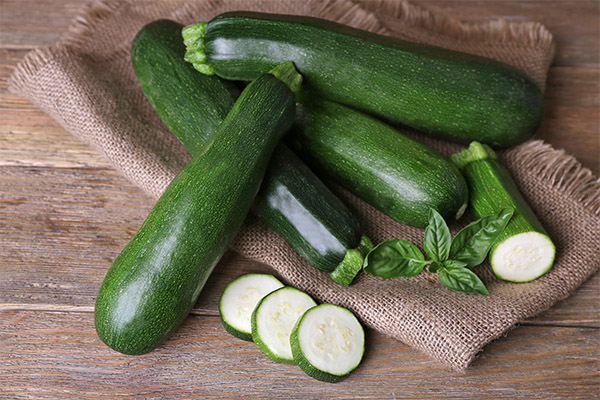
When diabetics.
Almost all types of zucchini have a low glycemic index - about 15 units. The potassium and pectin contained in zucchini allow you to normalize glucose levels. When cooked, the GI slightly increases, but the vegetable is still useful for diabetics.
But this only applies to boiling and steaming. Even baking makes it much less useful. As for frying, in this case, the glycemic index reaches 75 units. Such zucchini are harmful for diabetics.
In pancreatitis.
In the first days of exacerbation of pancreatitis, therapeutic fasting is prescribed, then gradually you can move to a normal dietary regime. Zucchini can be included in the diet only after a couple of weeks from the time of exacerbation, if there is improvement.
In this case, at first you can only stew and bake zucchini, turning them into a homogeneous puree before serving. In a state of long-term remission, patients with pancreatitis can also eat an omelet or soup with zucchini.
Gastritis
In this disease, zucchinis are used only after heat treatment. And in the state of exacerbation of them make a puree. In remission, zucchini can be eaten in boiled form.
For the intestines
Contained in zucchini pectin helps to improve digestion, so for most diseases, these vegetables are useful because they help to remove toxins from the body.
For constipation
Small amounts of zucchini can prevent constipation, including those associated with impaired intestinal peristalsis. But in excessive quantities they can provoke diarrhea.
Gout
This disease is associated with disorders of salt metabolism and an increase in the amount of purines. Zucchini does not contain these substances, so at gout it can be included in the diet. And since it contains a lot of ascorbic acid, which has anti-inflammatory properties, it will even help to relieve pain in this disease.
In colitis
With this pathology, you can not use fried zucchini, pickled vegetables, as well as pancakes and pancakes from them. But zucchini in boiled form will only be useful.
Hemorrhoids
In this disease, it is very important that the muscles and blood vessels are not strained during defecation, otherwise it can provoke bleeding. Since zucchini greatly improves digestion and intestinal peristalsis, it also helps with this disease.
In cholecystitis.
In this pathology, zucchini is even useful for its anti-inflammatory properties. In addition, it contains substances that help to normalize salt metabolism, which prevents the further development of cholecystitis. The fact is that zucchini contain up to 95% water, which has the ability to remove excess salts (especially phosphorus).
Zucchini-based folk medicine recipes
In folk medicine, zucchini flowers and seeds are most often used, with the second option being preferable due to the higher concentration of useful substances.
The seeds are used, for example, as an antiparasitic agent. Take 50 grams of peeled and dried seeds, pour a glass of boiling water, put on the fire, reduce it to a minimum and keep it on for another 15 minutes. After that, insist on a water bath for another two hours, strain and take 100 ml two or three times a day, between meals.
The seeds can serve as an effective remedy for diabetes. You need to grind dried zucchini seeds in a mortar, add a little water and honey to get a greenish "milk. It is also considered an effective remedy for pyelonephritis and kidney dysfunction caused by diabetes. The remedy is taken daily - of course, after consultation with your doctor.
Flowers are used in more serious situations - for example, in Eastern countries, they are used to prepare a decoction to treat pus wounds (1 tsp of dried inflorescences per glass of boiling water).
Zucchinis in Cosmetology
Zucchinis are used less often than fruits in cosmetology. Nevertheless, on their basis you can make masks.

- It is enough to crush the pulp of zucchini. For dry skin add a few drops of olive oil to this mixture, for oily skin it is better to take the same amount of lemon juice. The mixture is left on the face for 10-15 minutes and washed off.
- Mask can be made of boiled zucchini. To do this, it is rubbed through a sieve to get 2-3 tablespoons of puree, which is mixed with egg yolk and honey. Still warm mixture is applied to the skin for 10-15 minutes, then rinse with water.
- A good mask for dry skin can be made from one raw squash, grinded on a grater, and a spoonful of ground or mashed "Hercules. This mask, unlike the previous ones, is applied to dry skin and washed off with raw milk, if only one trusts its manufacturer.
Harms and Contraindications
As such, there are few contraindications for zucchini. They are forbidden to eat them in raw form in such diseases as gastritis, colitis, pancreatitis and other gastrointestinal disorders. The fact is that raw zucchini contains very large amounts of vitamin C, which is destructive to mucous membranes. Given the strong diuretic properties, it is better not to use zucchini in pyelonephritis and other kidney diseases, to reduce the load on them. In any case, it won't hurt to consult with a doctor.
But zucchini allergies are rare, although it should not be excluded completely. It's not even an allergy, but rather a hypersensitivity to these vegetables. In children it is manifested by frequent regurgitation (in infants), diathesis and dermatitis, in adults - inflammation of mucous membranes, redness and skin rashes (up to urticaria and angioedema). So if such symptoms appear, you need to be careful and see a doctor as soon as possible.
How to choose and store zucchini
Of course, only high-quality zucchini are useful. They should have a fairly firm white, greenish or slightly yellowish flesh. Under no circumstances should the flesh be loose and flaccid. The condition of the skin is also important. It should be smooth, without cracks, spots or other damage. Then the zucchini can even without drying or freezing be stored for a long time. Keep fresh vegetables in the refrigerator. On average, they can withstand defrosting well. You can find them a place in the refrigerator - there young zucchinis can stay for about two weeks. It is best to keep them apart from other vegetables so that they do not spoil. Ideally, zucchinis should be stored in sealed plastic bags. They do not need to be washed beforehand.
Can they be frozen?
Zucchinis can and should be frozen in order to preserve all the vitamins. There are several ways to do this. For example, you can simply take zucchini, remove the skin, remove the seeds, dry on paper towels, cut into cubes, place in bags and send to the freezer.
In the second variant zucchini can be frozen as one of the ingredients of the mix, in which also add chopped julienne carrots and bell peppers. The principle of freezing here is exactly the same, just need to take into account that different ingredients will be given different time to freeze.
How to eat zucchinis right
There are no special wisdoms here. The main thing is moderation, as with any other vegetables.
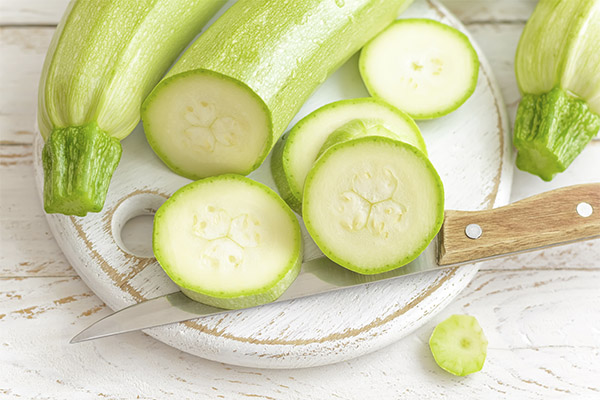
How much can be eaten per day
Some nutritionists assure that you can eat up to 1.5 kg of zucchini per day. But taking into account the individual characteristics of the body, even this amount can lead to diarrhea.
Is it possible to eat at night
Theoretically, zucchini can be eaten at night - it is a low-calorie food. And since they have a slight laxative effect, the morning will start with a bowel emptying. But if you go a little too much with their quantity, the night will pass uneasy, because zucchini also have a diuretic effect, albeit weak.
Can they be eaten raw?
Theoretically, zucchinis can be eaten raw, especially there are varieties with a sweetish taste. Basically in this form they are put in salads. But they are contraindicated for the above diseases.
What can be cooked from zucchini: Recipes
From zucchini you can prepare a variety of dishes. You only need to show a little imagination.
Fritters
For 0.4 kg of zucchini, take 3 tablespoons of flour, 2 eggs, 0.5 cups of sour cream, salt to taste, olive or sunflower oil for frying. Peel the vegetables, remove the seeds, chop the pulp on a coarse grater, but you can also whip in a blender. Grated zucchini necessarily releases juice, it must be drained and the vegetable mass squeezed. Only then you can add flour and mashed yolks, then whipped whites separately. On a heated frying pan, bake the pancakes in the usual way.
Casserole
For 0.4 kg of zucchini take 100 g of fat-free hard cheese, 2 eggs, 100 g of sour cream, half a teaspoon of soda soaked in vinegar, 150 g of cottage cheese. Peel the zucchini, grate coarsely together with cheese, add the rest of the ingredients, mix, bake for 30-40 minutes in an oven heated to 180°C.
Stew
This simple but delicious dish is suitable even for diabetics. It can be cooked as in a saucepan on the stove, and in a multicooker (in the second case is much faster). For cooking, you will need a pair of medium-sized zucchini, 1 head of onion, 3 tubers of potatoes, 1-2 carrots, one bell bell pepper and one tomato.
All the vegetables need to be peeled. Onions and carrots should be chopped on a coarse grater and then lightly stewed with oil until semi-cooked, then only add sliced potatoes to the dish and stew for another 10 minutes. Then comes the turn of peppers and tomatoes. They are given 5-10 minutes. It should be borne in mind that the acid released from the tomato does not allow the potatoes to boil. The last stage in the stew is to add the zucchini directly, as it boils very quickly. For spices, use salt. Before serving, decorate with greens.
Salad
This dish is prepared very simply and quickly. For 0.4 kg of zucchini take a few carrots and cucumbers, a large onion, and for the dressing - sesame oil and herbs, you can use the most common parsley and dill. Shred all vegetables on a grater, you can use the one used for Korean carrots. Only cut the onions into rings and shred the greens. Mix all the ingredients, season with salt and sesame oil.
Draniki
To prepare this traditional Belarusian dish you need potatoes. But there is a variant of zucchini - for this take 2-3 fruits, 2 small eggs, 4 tablespoons of wholemeal flour, some greens, olive oil for frying, spices. It will take about half an hour to prepare.
Grind zucchini on a medium grater, add an egg, flour, mix to make a dough of the same consistency as for doughnuts. It is recommended in this case to pour out the juice, too, and squeeze the vegetable mass itself.
After 3-4 minutes, turn the doughnut over and fry it on the other side. It is recommended to use a wooden spatula for this purpose. Serve the pancakes hot with sour cream and greens.
Soup
Zucchinis are used to make all kinds of soups - for example, they are added to minestrone or soup with celery. But you can make zucchini cream soup. For this you need 0.5 kg of zucchini, 1 egg, 1 medium-sized onion, 400 ml of water, 1 teaspoon of wholemeal flour, a small piece of butter, 100 ml of sour milk or unsweetened yogurt without additives.
Peel zucchini, cut into slices, pour water and boil on low heat until tender, then whip in a blender. Lightly fry flour in butter and add it to zucchini puree. If necessary add some water and cook on medium heat for 4-5 minutes. Whip egg with sour milk or yogurt, add to soup, sprinkle with chopped greens (basil, rosemary, parsley).
Cutlets
For the preparation need the following ingredients: 0.5 kg of chicken fillet, one large zucchini, 100 g of cooked round rice, one carrot, a large onion, 1 egg, salt and pepper to taste. Pass the meat, onion and carrot through a meat grinder. The zucchini is cleaned and coarsely grated, squeezed so that there is no juice, then added to the stuffing at the same time as the rice. In this mass beat an egg, pour salt and pepper, mix, form cakes, which should also be rolled in flour or breadcrumbs, after which they are cooked as usual.
Pancakes
Zucchinis are more often made into pancakes rather than pancakes. However, pancakes can also turn out very tasty, their main secret is the addition of onions. To make them, you will need 1 small zucchini or half a medium-sized vegetable, 1.5 cups of whole wheat flour, 2 medium eggs, 1 tbsp. sugar, 1 tsp. salt, 1 onion, frying oil.
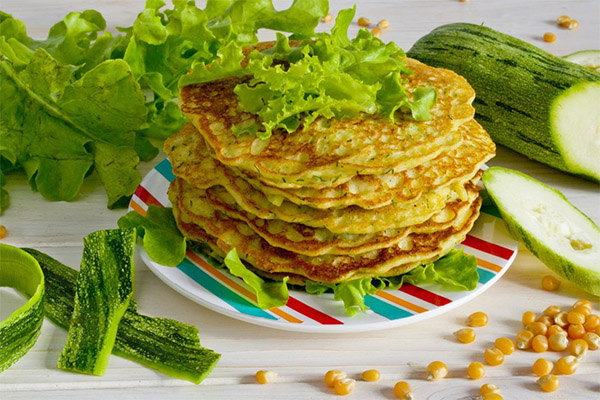
Peel the zucchini, remove the seeds and grate on a fine grater. Add to this mass grated onions, sugar, salt, mix thoroughly. Whisk the eggs in a separate bowl. At this time the juice comes out of the zucchini and onions. You can partially drain it, but do not squeeze the vegetables. Pour the milk and beaten eggs into them, stir, and then pour in the flour. The consistency of the dough can be adjusted. It should be moderately liquid. To prevent the pancakes from sticking to the pan, you must immediately add vegetable oil to the batter. Next, they are fried exactly as usual. Serve the pancakes hot and topped with sour cream.
The sauce
This is a traditional dish, which is prepared with potatoes and other seasonal vegetables. And even in this case, it turns out to be low-calorie - only 89 kcal per 100 grams. For cooking you will need: One zucchini of medium size, 2 small sweet peppers, 2-3 cloves of garlic, 200 ml of tomato juice or pasta, 8 potatoes, parsley, salt, vegetable oil and black pepper to taste.
Zucchini should be peeled from the skin, remove the seeds and finely chop. Pepper should remove the stalk and seeds, cut into julienne strips. Peel and chop onions, pass garlic through a press. Mix all the vegetables in a container and add salt and pepper. Young potatoes are washed, peeled, sliced, placed in the bottom of a baking dish, add the vegetable mixture on top, pour the vegetable oil and tomato juice. Then cover the form with a lid, put it in a heated oven. Cooking time - about 40 minutes, although everything depends on the type of potatoes.
Such sauce can also be cooked without potatoes, and then served with spaghetti or meat dishes.
Chebureks
This dish is sometimes called fake chebureks, but this is not quite right, since both the minced meat and the dough here are quite real. For this dish you will need: 0.5 kg of zucchini, 1 onion, 2 tablespoons of chopped fresh dill, 1.5 cups of milk, 2 eggs, a cup of flour, ground meat, salt, black pepper - to taste.
Peel and grate zucchini and onions, add milk and beaten eggs, salt, vegetable oil and spices. Knead the batter to make it thicker than for pancakes. Mix the minced meat from the cooked meat with chopped fried onions. Pour a portion of batter on a well heated pan as for a normal pancake, put the filling on one edge, which cover the free edge to make a cheburek. Secure the edges and fry the cheburek until golden.
Korean style zucchini
This is a great vegetable snack. For 8 servings of 0.8-1 kg of young zucchini, 200 g carrots, 1 bell bell pepper, 2-3 cloves of garlic, 1 tablespoon sugar, salt and spices to taste, 3 tsp. table vinegar, 3 tablespoons of vegetable oil (preferably olive oil), fresh basil and dill to taste.
Young zucchini do not even need to peel the skin, you can immediately cut them into thin slices (to do this, it is recommended to use a special knife or grater designed for carrots in Korean). Carrots should be cut in the same way, peppers - thin strips with a regular knife. Chop the dill and basil (you can take both green and red) in a convenient way. Mix the prepared vegetables and herbs, add garlic cloves squeezed through a press.
For dressing, use salt, sugar, spices (you can buy a special mix for Korean carrots in stores), vegetable oil and vinegar. Mix everything thoroughly. Ready dish to transfer to a container, gently tamp the vegetables with a spoon, so that they can soak up the dressing. Cover the container with a lid and leave in the fridge for at least half an hour. After that, the vegetables can be transferred to a salad bowl and served as a cold snack.
Zucchini Caviar
Today, zucchini caviar can be bought in any supermarket. But, of course, homemade turns out much tastier, and cooking it is not as difficult as it might seem. To prepare it you will need: 3 zucchini of medium size, 1-2 carrots, 2 onions, a couple of garlic cloves, 2 tbsp. spoonfuls of tomato paste or homemade tomato sauce, vegetable oil for frying vegetables, salt and pepper to taste.
Peel and chop onions, grate carrots, peel and dice zucchinis. Onions and carrots sauté in a little oil, you can add a little water. Zucchini lightly fry separately in a pan with nonstick coating, trying to use as little oil as possible, so that the caviar is not too greasy. Put all the ingredients in one bowl, add salt, pepper, add a little water and stew for about an hour, stirring occasionally. About 15 minutes before it will be ready, to this mass add tomato paste and garlic squeezed through a press. After 15 minutes, turn off the fire, cool the vegetable mass a little and pass it through a blender. Obtained zucchini caviar, which can be served as a cold vegetable snack.
Pickled zucchini
There are many recipes for pickled zucchini. They differ mainly in the spices used, as well as their proportions, while the principle of preparation will be the same everywhere. For 0.5 kg of zucchini take 2-3 cloves of garlic, 1 tsp. fine salt, 3 tablespoons of apple cider vinegar (6%), 5 tablespoons of refined vegetable oil, 1 tablespoon of liquid flower honey, ground pepper and other spices to taste (you can take parsley and dill).
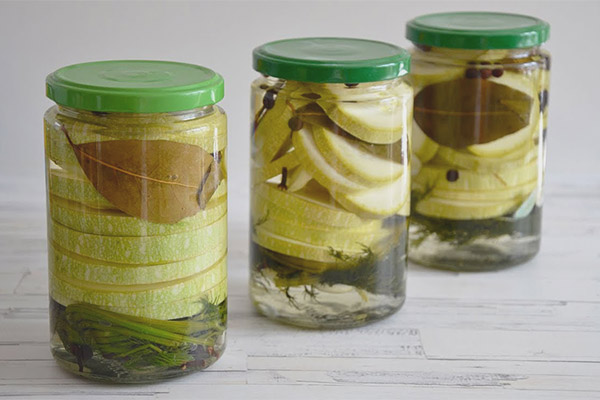
Zucchini are peeled from the skin and cut into thin slices. From the oil, vinegar, honey and spices make a dressing. Fresh greens are chopped, mixed with zucchini, pour the prepared dressing and put in the refrigerator for at least three hours, so that the vegetables had time to marinade.
Zucchini on the grill
In its classic form, this recipe contains a minimum number of ingredients. For it you will need zucchini, vegetable oil (preferably olive oil), garlic, pepper and salt to taste.
It is necessary to heat the grate properly. Depending on its shape, zucchini are cut either in slices or circles, so that they do not fall through the bars. If zucchini are young, it is not even necessary to remove the skin. Oil is heated with garlic, so that there is a tangible flavor. This simple sauce is used for smearing zucchini slices on both sides, sprinkling them with salt and any spices.
If desired, you can simultaneously cook mushrooms, sweet peppers, potatoes or eggplants on the grill with them.
How to stew
Zucchini most often stewed with onions and carrots. And the onion and carrot are first fried for a couple of minutes, then add zucchini, which gives off liquid, and stew the vegetables under a closed lid for 15-20 minutes. You can also add sour cream.
How to Roast
This recipe is very simple. Zucchini cut into thin slices, sprinkle with salt and pepper, pile each slice in flour, lay it on a heated frying pan greased with garlic oil. Roast zucchinis on both sides until golden brown.
Should the zucchinis be peeled before frying?
There is no unambiguous answer to this question. Many housewives believe that it is still better to peel, and even young zucchinis, as various harmful substances (including those that are designed to protect zucchinis from pests or ensure their safety during transportation) often accumulate in the skin of vegetables. The problem is that if young zucchinis have their skins removed, they will lose their shape when cooked. Therefore, often as a compromise, culinary experts advise peeling only the coarse skin of a long-ripened zucchini. And young zucchini should simply be washed very thoroughly to remove at least those toxins and chemicals that linger on the surface.
How to remove bitterness from zucchini
Zucchini are rarely bitter, but if it does happen, you need to remove the skin from them, cut into slices or circles and sprinkle with salt. After half an hour, it, along with the bitter juice released, can be rinsed off with running water and cooked in the usual way.
Can I give zucchini to pets?
Although not all of the foods that their owners eat are good for pets, zucchini can be given to dogs and cats. These vegetables are absolutely safe for animals. And at the same time they are sources of calcium, potassium and beta-carotene, which pets need no less than people. However, zucchini is better to give in boiled form. They are especially useful for preventing constipation, since they contain a lot of dietary fiber. Fried and pickled zucchini should not be given to animals.
Interesting facts about zucchini

- Zucchinis came to Europe about 500 years ago, after the discovery of the New World. But for many years they were grown as ornamental plants for their large and beautiful flowers. By the way, even then there was an opinion among botanists that it was a berry.
- The first to think of eating zucchinis (and not just their seeds and flowers) were the Italians. And in France they cook the famous ratatouille with zucchini. Although the researchers of culinary traditions believe that this dish was invented not in Paris and Marseille, but in Nice, and it was not a popular dish, but the author's. However, for the history we did not save the name of this man, who in the famous Pixar cartoon "Ratatouille" is presented as a kind of collective image of chefs.
- Zucchinis and eggplant dishes are cooked all over the Mediterranean. In each country they are called differently - for example, in Spain - "pisto", in Italy - "caponata". It is also found in Turkey, where it is called "imam bayaldi.
- Unlike Russia, in Italy they like zucchini better. And there they prefer the dairy variety, the fruits of which are about the length of a finger. These miniature zucchinis can be fried as a whole in oil with the addition of Provencal herbs. By the way, while in Russia zucchinis are more often eaten with meat and potatoes, in Italy they are eaten with pasta and seafood, such as shrimp, but also with anchovies, sesame seeds and other appetizing additions.
«Important: All information on this site is provided for informational purposes only For educational purposes only. Please consult with a health care professional before following any recommendations. specialist before applying any of the recommendations. Neither the editors nor the authors shall be liable for any possible harm caused by materials."

